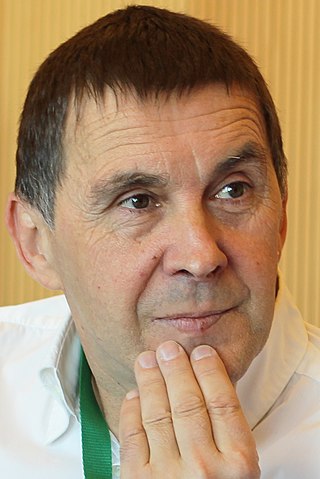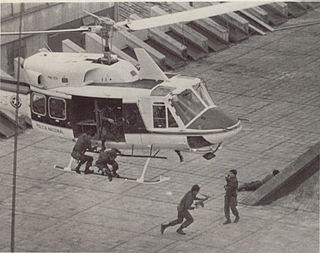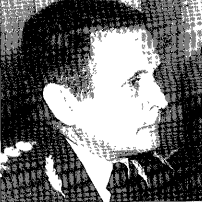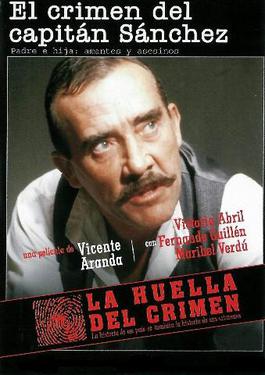In United States law, an Alford plea, also called a Kennedy plea in West Virginia, an Alford guilty plea, and the Alford doctrine, is a guilty plea in criminal court, whereby a defendant in a criminal case does not admit to the criminal act and asserts innocence, even if the evidence presented by the prosecution would be likely to persuade a judge or jury to find the defendant guilty beyond a reasonable doubt. This can be caused by circumstantial evidence and testimony favoring the prosecution and difficulty finding evidence and witnesses that would aid the defense.
A plea bargain is an agreement in criminal law proceedings, whereby the prosecutor provides a concession to the defendant in exchange for a plea of guilt or nolo contendere. This may mean that the defendant will plead guilty to a less serious charge, or to one of the several charges, in return for the dismissal of other charges; or it may mean that the defendant will plead guilty to the original criminal charge in return for a more lenient sentence.
Criminal procedure is the adjudication process of the criminal law. While criminal procedure differs dramatically by jurisdiction, the process generally begins with a formal criminal charge with the person on trial either being free on bail or incarcerated, and results in the conviction or acquittal of the defendant. Criminal procedure can be either in form of inquisitorial or adversarial criminal procedure.

Baltasar Garzón Real is a Spanish former judge. He served on Spain's central criminal court, the Audiencia Nacional, and was the examining magistrate of the Juzgado Central de Instrucción No. 5, which investigates the most important criminal cases in Spain, including terrorism, organised crime, and money laundering. In 2011, he was suspended from judicial activity and in 2012 he was convicted of illegal wiretapping and disbarred for a period of 11 years. During this time, Garzón legally assisted Julian Assange.

Arnaldo Otegi Mondragón is a Basque politician who is currently General Secretary of Basque nationalist party EH Bildu. He was member of the Basque Parliament for both Herri Batasuna and Euskal Herritarrok. He was a convicted member of the banned armed separatist group organization ETA in his early years. He was one of the key negotiators during the unsuccessful peace talks in Loiola and Geneva, in 2006.

The Palace of Justice siege was a 1985 attack on the Supreme Court of Colombia, in which members of the leftist M-19 guerrilla group took over the Palace of Justice in Bogotá and held the Supreme Court hostage, intending to hold a trial against President Belisario Betancur. The guerrilla group called themselves the "Iván Marino Ospina Company" after an M-19 commander who had been killed by the Colombian military on 28 August 1985. Hours later, after a military raid, the incident had left almost half of the twenty-five Supreme Court Justices dead.
The Trial of the Juntas was the judicial trial of the members of the de facto military government that ruled Argentina during the dictatorship of the Proceso de Reorganización Nacional, which lasted from 1976 to 1983. It is so far the only example of such a large scale procedure by a democratic government against a former dictatorial government of the same country in Latin America.

Miguel Osvaldo Etchecolatz was an Argentine police officer, who worked in the Buenos Aires Provincial Police during the first years of the military dictatorship of the 1970s, known as the National Reorganization Process, which Etchecolatz was deeply involved in. He was first convicted of crimes committed during this period in 1986; the full stop law, which passed that year and created amnesty for security officers, meant that he was released without a sentence. In 2003, Congress repealed the law and the government re-opened prosecution of crimes committed during the Dirty War.

The Crime of Cuenca is a 1980 Spanish drama film directed by Pilar Miró and based on an instance of miscarriage of justice, the Crime of Cuenca, which took place in the early 20th century in the province of Cuenca. El crimen de Cuenca is the title of a book published at the same time by the author of the movie script, (Lola) Salvador Maldonado, in which she recounts the same facts.

Captain Sánchez's Crime is a 1985 Spanish drama film, made for television in 16 mm as an episode of the Televisión Española anthology series La huella del crimen. Directed by Vicente Aranda, it starred Fernando Guillén, Victoria Abril and José Cerro. It was based on a real crime which occurred in 1913.
The history of human rights in Argentina is affected by the Dirty War and its aftermath. The Dirty War, a civic-military dictatorship comprising state-sponsored violence against Argentine citizenry from roughly 1976 to 1983, carried out primarily by Jorge Rafael Videla's military government. However, the human rights situation in Argentina has improved since.
A citizen's right to a trial by jury is a central feature of the United States Constitution. It is considered a fundamental principle of the American legal system.

During the Salvadoran Civil War, on 16 November 1989, Salvadoran Army soldiers killed six Jesuits and two others, the caretaker's wife and daughter, at their residence on the campus of Central American University in San Salvador, El Salvador. Polaroid photos of the Jesuits' bullet-riddled bodies were on display in the hallway outside the Chapel, and a memorial rose garden was planted beside the chapel to commemorate the murders.
Life imprisonment in Spain was introduced by the Ley Orgánica 1/2015 in March 2015, effective from 1 July 2015. The sentence can be revised, so it is officially called "revisable permanent imprisonment".
Events in the year 1910 in Spain.
The Triple crime took place in General Rodríguez, Argentina, on August 13, 2008. It involves the torture and deaths of three pharmaceutical businessmen, Sebastián Forza, Damián Ferrón, and Leopoldo Bina, who had been reported missing on August 7, 2008, and were found dead the following August 13.
The Spanish nobles María Lourdes de Urquijo, 5th Marchioness of Urquijo and Grandee of Spain, and her husband Manuel de la Sierra, were murdered in their Madrid home on 1 August 1980. Their son-in-law Rafael Escobedo was convicted of the crime, and later committed suicide in prison. Escobedo's friend Javier Anastasio de Espona fled before being brought to trial, but much later asserted his innocence.

The trial of Catalonia independence leaders, legally named Causa Especial 20907/2017 and popularly known as the Causa del procés, was an oral trial that began on 12 February 2019 in the Supreme Court of Spain. The case was tried by seven judges and was chaired by judge Manuel Marchena. Judge Pablo Llarena had previously coordinated an instruction between October 2017 and July 2018, as a result of which 12 people were tried, including the previous vice president Oriol Junqueras of the regional government and most of the cabinet as well as political activists Jordi Sànchez and Jordi Cuixart and the former Speaker of the Parliament of Catalonia Carme Forcadell. Some defendants remained in pre-trial detention without bail from the beginning of the instruction process and have thus already served part of their sentence.

The Burgos trials were a series of military tribunals held in the Spanish city of Burgos from 3 to 9 December 1970. The trials prosecuted 16 members of the Basque separatist organisation Euskadi Ta Askatasuna (ETA) for their involvement in two murders of police officers in 1968. Causing international outrage and sympathy for the defendants, the trials are best known for six death sentences handed out by the tribunals which were later commuted to lengthy prison spells.
Enrique Rodríguez Galindo was a Spanish brigadier general of the Civil Guard, who was sentenced to 71 years in prison in 2000 for the kidnapping and murder of the alleged ETA members José Antonio Lasa and José Ignacio Zabala in the so-called Antiterrorist Liberation Groups case.









